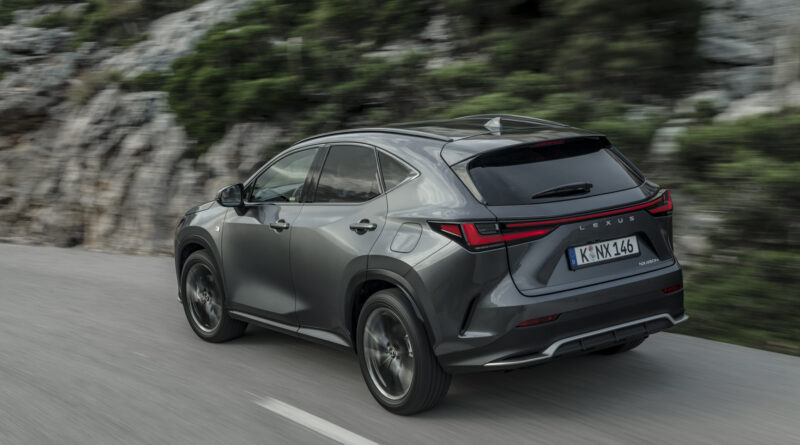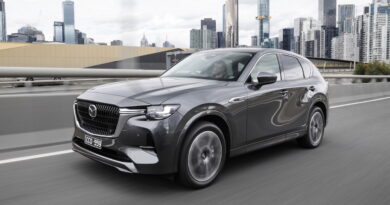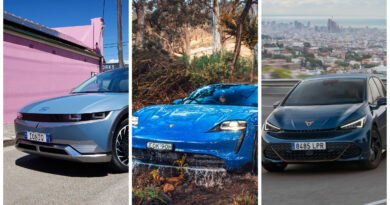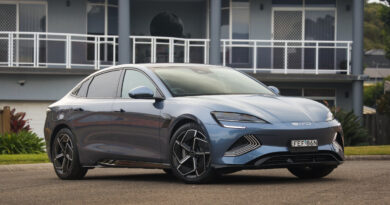Lexus NX450h+ plug-in hybrid EV first drive review
The Lexus NX450h+ is the first-ever PHEV from Toyota’s luxury brand. Though not yet officially confirmed for Australia, we’re told the petrol-electric plug-in is a near certainty. It may even arrive at the same time as the rest of the second-generation NX range in January next year.
Beginning with the RX400h back in 2005 Lexus has plenty of regular hybrid experience, so it’s no surprise that the plug-in NX450h+ is mostly impressive. It needs to be. In Europe Lexus is counting on it to make up 75 percent of overall NX sales in markets where there are government incentives to choose a plug-in hybrid.
EV Central was able to check out the NX450h+ at the recent presentation of the new NX line-up to European media in Spain. Badges aside, the PHEV looks identical to the hybrid NX350h, expected to be the best-selling model in the Australian line-up.
Redesigned inside and out, the new version of the strong-selling medium-size premium SUV is a little larger in every dimension than the original NX of 2014. The bulky exterior looks only a little more attractive than before, but the spacious interior is a big step forward for Lexus.
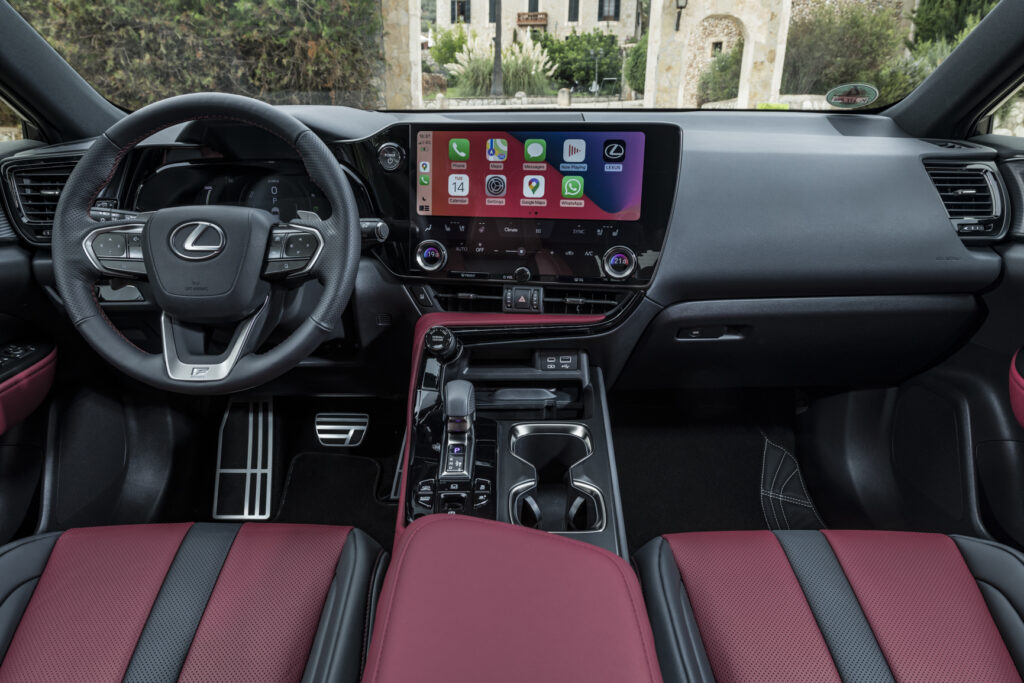
The NX is the brand’s first model to adopt its new Tazuna cockpit design concept. This aims to reduce button-clutter and improve operational ergonomics. Not only user-friendly, it’s also lovely to look at and beautifully made.
Other NX family strong points are superb seats, smooth-riding suspension set-ups, up-to-date multimedia tech, and good standard equipment levels, including driver-assist and safety systems.
But let’s focus on what makes the first Lexus PHEV different from the other NX models…
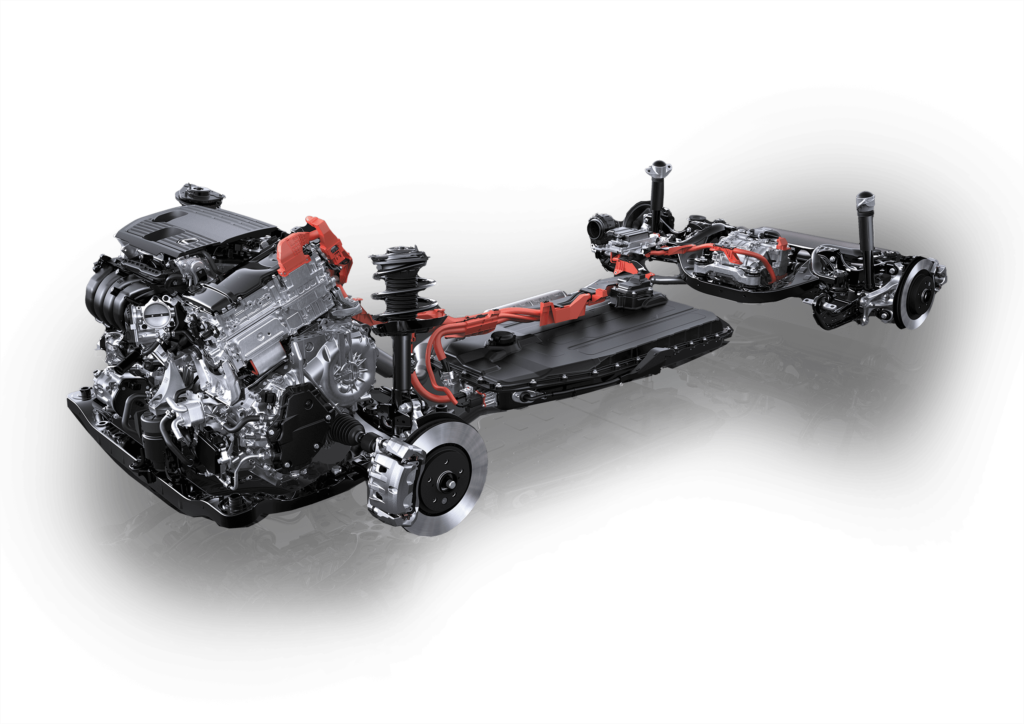
NX450h+ PHEV tech
Under its bonnet, the Lexus NX450h+ has a 2.5-litre Atkinson-cycle four-based petrol-electric hybrid unit that’s almost the same as that in the new 350h (and various Toyota EVs, including the Kluger Hybrid). The engine for the PHEV is tuned to produce fractionally less power and torque; 136kW and 227Nm.
The PHEV engine is teamed with a 134kW/270Nm front e-motor, same as the hybrid. There’s a second e-motor in the rear axle, making the NX450h+ all-wheel drive. This 40kW/121Nm e-motor is identical to the one used in the AWD version of the 350h. All the motors are permanent-magnet synchronous types.
No prize for guessing that the big difference between the two is battery pack size. The 350h has a small pack mounted crossways beneath its rear seat. The 450h+ has a much larger lithium-ion pack beneath the passenger compartment floor.
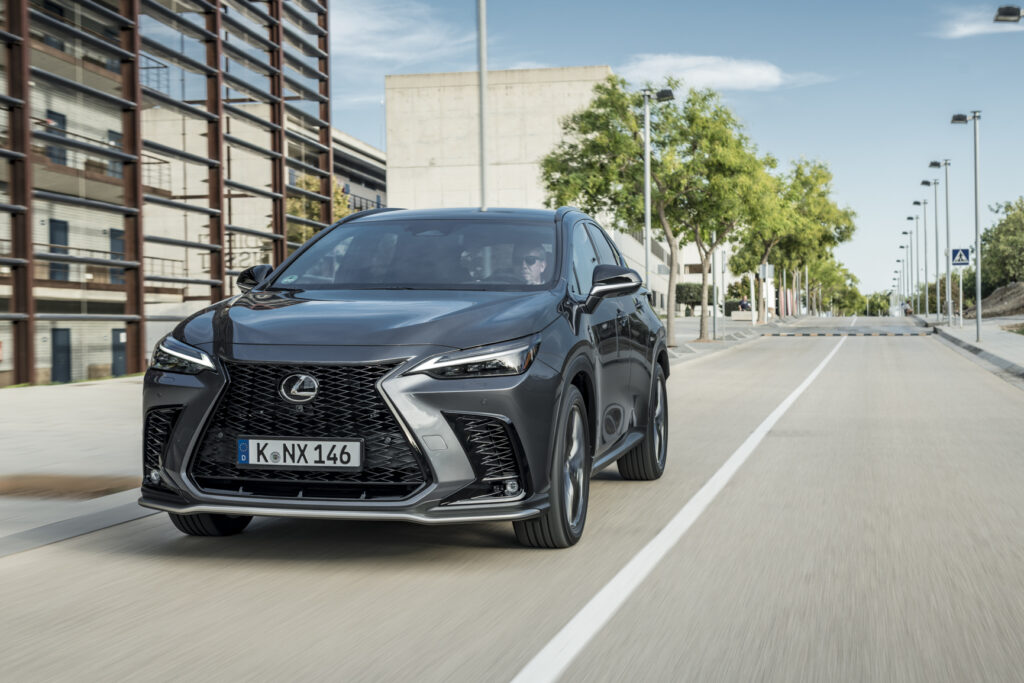
The energy capacity of the 96-cell and 355-volt NX450h+ pack is 18kWh, enough to give it a well above average electric-only driving range. The Lexus delivers 69 to 76km in the WLTP combined-cycle test and 89 to 98km in the urban-cycle test.
The bigger battery pack can also supply more power to the e-motors of the NX450h+. Its peak system output is 227kW, which is 48kW more than the 350h. Accordingly, the 450h+ is easily the quickest model in the new NX range. Lexus claims a 0-100km/h acceleration time of 6.3 seconds, well below the 7.7 seconds of the NX350h with AWD.
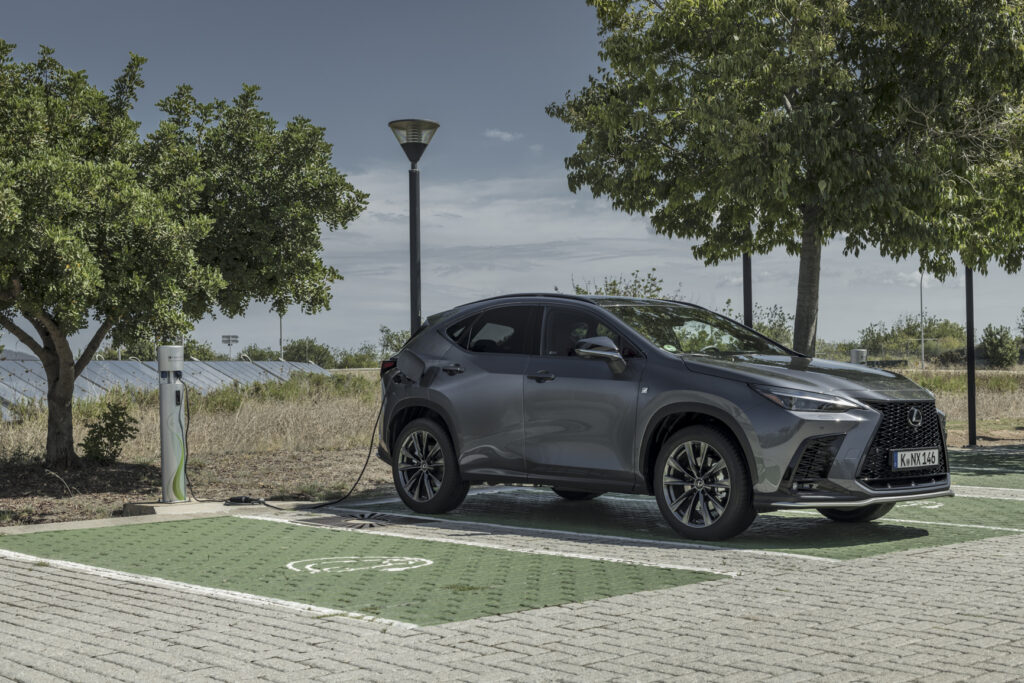
AC-only charging
The limits of the on-board charger of the NX450h+ cap the rate of charge at 6.6kW. Connected to a wallbox or public charger that can supply at least this much power, the Lexus will take around three hours to fully recharge its pack. The connector is the usual Type 2 plug.
According to a Lexus engineer who helped develop the NX450h+ powertrain, there wasn’t enough room in the vehicle to accommodate a larger and more powerful charger.
He added that Lexus considered adding DC fast-charge capability, but decided it was likely to be used infrequently and anyway wasn’t a must-have for a PHEV with a 55-litre fuel tank.
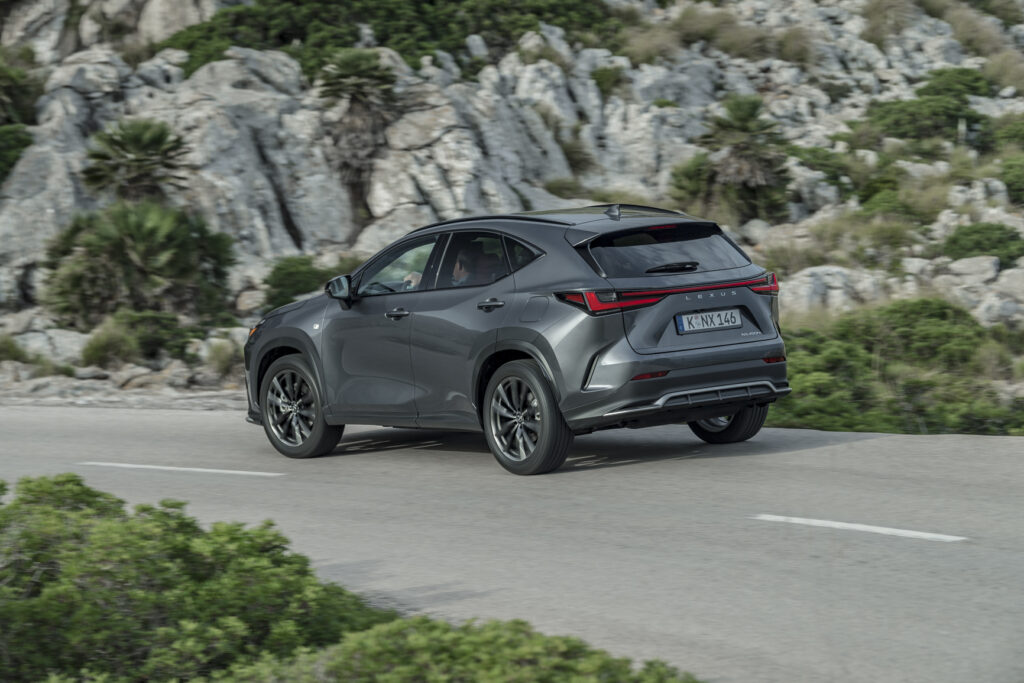
What’s it like to drive?
Snappy. This is a Lexus SUV with get-up-and-go. Especially from standstill, the NX450h+ delivers serious shove.
EV is the default driving mode. In it, the 450h+ will run purely electric until its battery pack is depleted. At this point it switches to HV – hybrid – operation. In EV mode the Lexus can be driven at up to 135km/h.
Its electric-only performance is more than sufficient for everyday driving situations. The NX450h+ is also much quieter and smoother in EV mode, which suits its calm and classy character.
Using buttons grouped adjacent to the stubby gear selector, the driver can select other powertrain modes.
Auto HV/EV switches between the modes, favouring EV operation but always ready to fire up the four for maximum performance.
HV mode means the Lexus will maintain its level of battery charge, if there’s any remaining. This is the mode it automatically adopts when the battery runs dry. Lexus points out that efficiency in HV mode is much better than its European rivals.
Finally, there’s a Charge mode. This uses the engine to recharge the battery. It’s a mode that’s useful in Europe, where some big cities have zero emissions zones that can only be accessed by EVs or PHEVs running electrically.
The handling of the NX450h+ is capable enough. It doesn’t set out to be a sporty drive, and succeeds. Drive at a sensible pace and there’s a lot to like; the quality, space, ride comfort, and responsive multimedia are foremost on the list.

How much with the NX450h+ cost? Here’s our best guess
With launch still three months away Lexus hasn’t yet finalised pricing for the new NX range. Our best guess is that the NX450h+ will be around $90,000, which is $10,000 more than the expected price of a top-spec 350h and a little below the Mercedes-Benz GLC300e, an obvious rival.
Lexus NX450h+ price and specifications
Price: $90,000 (estimated)
Basics: PHEV, 5 seats, 5 doors, SUV, AWD
EV range: 69-76km (WLTP)
Battery capacity: 18kWh
Battery warranty: 8 years/160,000km
Energy consumption: TBA
Fuel consumption: 2.8L/100km
Engine: 2.5-litre 4-cylinder, 136kW/227Nm
Motors: 1 front 134kW/270Nm and 1 rear 40kW/121Nm
Combined power/torque: 227kW/torque not quoted
AC charging: 6.7kW, Type 2 plug
DC charging: NA
0-100km/h: 6.3 seconds

